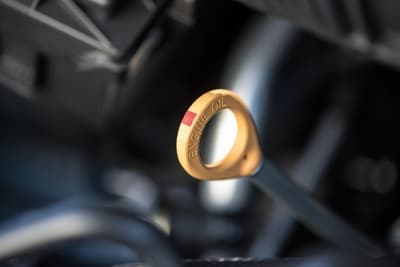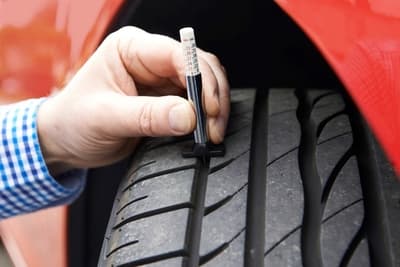Seven Essential Car Checks to Make Before a Long Journey
Many motorists admit to overlooking the basic car checks required before embarking on a long journey. We want to help keep you safe and sound during your travels, so we've compiled a handy list of seven essential car checks to make before you hit the road.
1. Oil
Oil provides your engine’s moving parts with lubrication and allows it to run smoothly; without it, your engine would seize up rapidly, leading to breakdown and a costly repair bill. Essentially, it’s the lifeblood of your engine. Despite its obvious importance, the RAC report that one in three vehicles they attend to has dangerously low oil levels. So how can you ensure it’s optimal for the long road ahead? We’ve got you covered.
Checking Your Oil

Check the dipstick underneath the bonnet - which can usually be identified by a yellow and orange ring pull - and ensure the oil level falls between the minimum and maximum markers at the end of the dipstick. If required, top up with the oil recommended in your vehicle handbook.
2. Tyres
Pressure
Ensuring the pressure of your tyres is correct is absolutely essential before embarking on a long journey. Underinflated tyres, for instance, are a key contributor to tyre blowouts, while overinflated tyres have less contact with the road, which results in reduced traction and poor braking distances.
In short, not only will a tyre pressure check prolong your tyres’ lifespan – it’ll keep you and your family safe on the road.
How often to check tyre pressure
It’s recommended that you check your tyre pressures once a month, however, this is the bare minimum. We recommend halving that turnaround time to every two weeks to ensure that your tyres are always inflated to their optimal level. This will also allow you to stay attuned to your car’s needs, while providing ample opportunity to check the tyres’ tread wear, along with any potential hazards, such as glass or nails in the tyre walls. Remember to check your tyre pressures when the tyres are cold, several hours after driving.
Find out what the right tyre pressure for your car is.
Before and after long distances
As well as your standard fortnightly checks, it’s important to inspect your tyres prior to driving long distances because their pressure is likely to be in flux. Similarly, post-journey checks should be made to ensure the optimum pressure is maintained in light of adverse weather conditions.
Tread wear
As well as tyre pressure, check your tyres’ tread depth on all tyres to make sure they’re safely within the legal limit, which is 1.6mm in a continuous band around the central ¾ of the tyre.
Measuring tread depth

You can use a tread depth indicator to measure these values. If you haven’t got one to hand, however, fetch a 20p coin and stand it up in the tyre tread – if the outer edge of the 20p is visible, it’s time to replace the tyre. Moreover, most tyres have tread wear indicators inside the tread grooves that indicate when your next tyre change is required.
More on tyres
Besides pressure and tread wear, be sure to check the overall condition of your tyres before hitting the road. Older tyres and those that have been exposed to a lot of sunlight during the summer months can be prone to cracking, while potholes and adverse weather conditions can add to your tyres’ wear and tear.
3. Screen Wash
Screen wash is a year-round essential, as dirt can accumulate and obscure your view, making driving extremely dangerous. The cleaning agents in screen wash are designed to cut through grime, thus taking care of this problem.
Checking screen wash level
Pop the bonnet open and check the screen wash level – the bottle of which will be housed in a tank. If necessary, top up the bottle with a quality screen wash additive. Alternatively, visit your local garage and pick up some pre-mix, which can be purchased for around the same price as a pack of mince pies.
4. Windscreen and Wipers
Windscreen
Even the most innocuous looking cracks can quickly become a serious problem if not dealt with immediately. To stay safe and avoid costly repairs, inspect your windscreen closely – any scratches or cracks over 10mm will have to be filled with resin. In some cases, however, the screen will have to be replaced, so be vigilant when checking for cracks.
Wipers

Being one of the least sturdy car parts, wipers tend to sustain damage over time - especially in wintery weather. Therefore, check the wiper blades for any damage to the rubber edges as this can prevent wipers from clearing water effectively, leaving a hazardous streaked view.
5. Coolant Level
Coolant protects your engine against extreme cold during winter, while its high boiling point removes excess heat – essential for those moments idling on the motorway in the busy traffic!
Checking coolant level
While the engine is cold, locate the radiator reservoir underneath the bonnet, before ensuring the coolant level falls between the minimum and maximum markers. If a top up is required, refer to your vehicle manual to ascertain the correct coolant for your car.
6. Electrics
From headlights to battery, your car has numerous electrical systems that require regular maintenance – especially before a long journey. Our handy tips below will keep you safe and sound, while maybe saving you a few pounds!
Walk around your vehicle to make sure all the lights are working. This includes the headlights, reverse lights, brake lights, indicators and cabin lights. Many people overlook their cabin light checks, but you don’t want to be plunged into darkness while trying to read the map!
For those of you driving your car abroad, bear in mind it’s compulsory in most countries to fit your car with headlamp beam converters, and failure to do so could result in a €90 fine.
Battery
The RAC reports over 400,000 battery faults every winter, and the majority of these are down to two main factors: cold weather affecting the battery, and wet, icy conditions affecting the vehicle’s electrics. As adverse conditions take a toll on a vehicle’s battery and electrics, it might be worth getting them checked by a professional before embarking on a long journey.
Checking the battery
Ensure the battery terminals are clean and that the engine starts correctly. Any battery corrosion should be carefully cleaned off with hot water and petroleum jelly. If your engine struggles to start, it’s best to get it checked by a professional at your earliest convenience. Bear in mind that batteries over four years old tend to decline quickly.
7. Car Jack and Wheel Nut Key
These are two crucial yet overlooked essentials you’ll need when embarking on a long journey in winter. If you sustain a puncture, for instance, you’ll be able to fit the spare tyre yourself – but only if you have a car jack to hand.
The wheel nut key is equally important as you will not be able to remove the wheel without it. And remember, your recovery service is unlikely to have the exact key to remove your wheel so the best they’ll be able to do is tow you to a nearby garage.
With this is mind, equip yourself with your jack and key before hitting the road.
